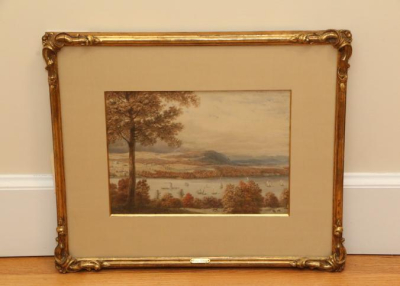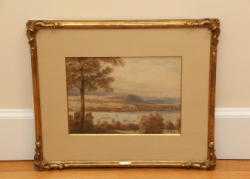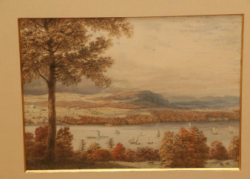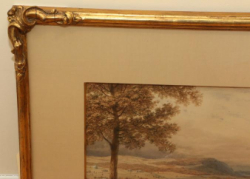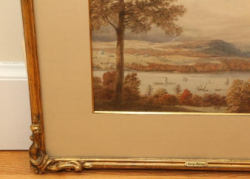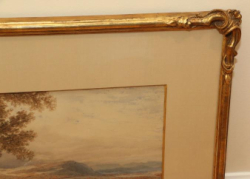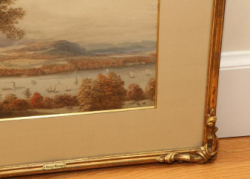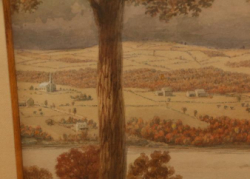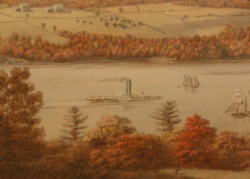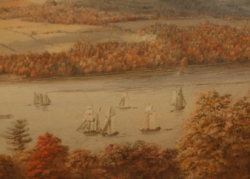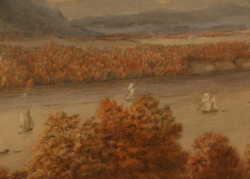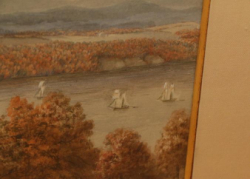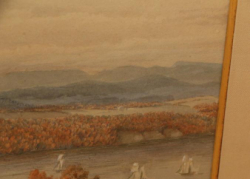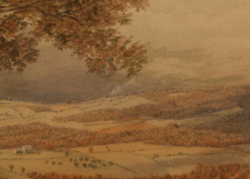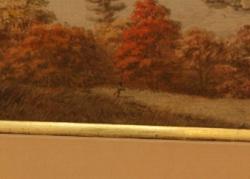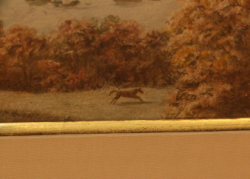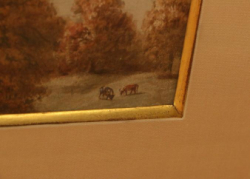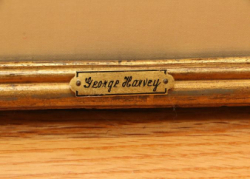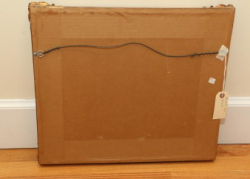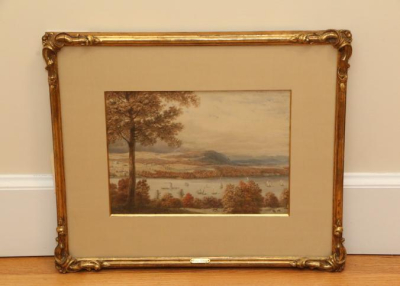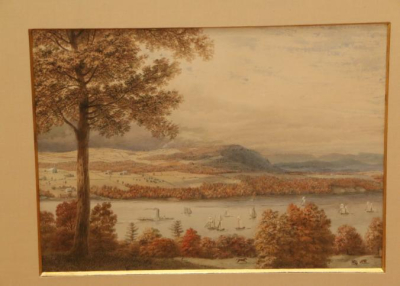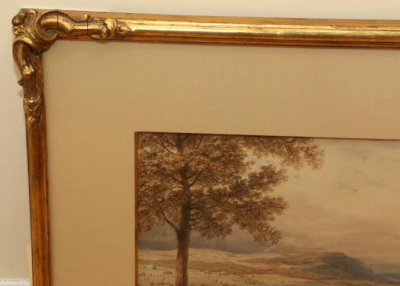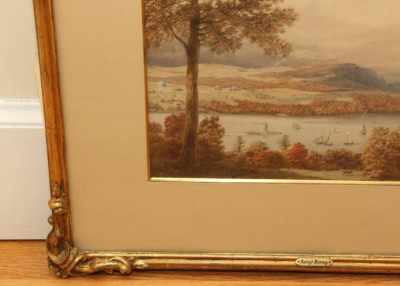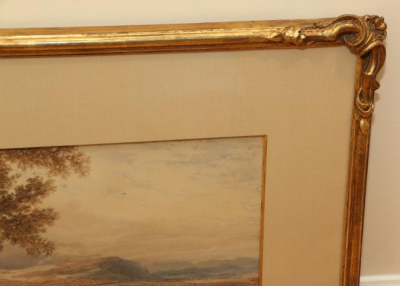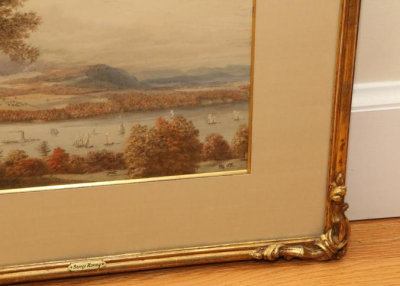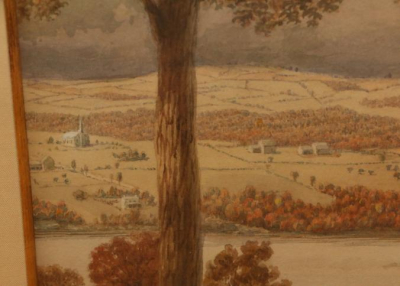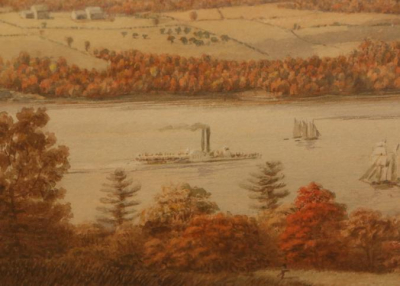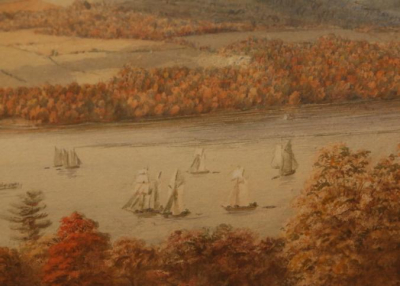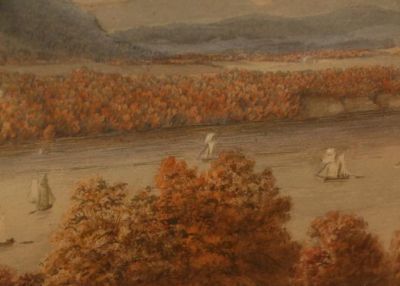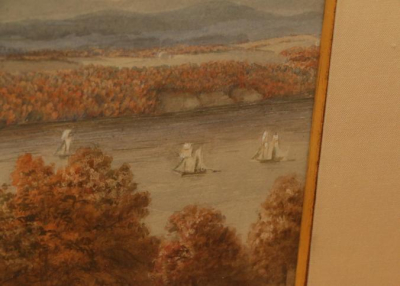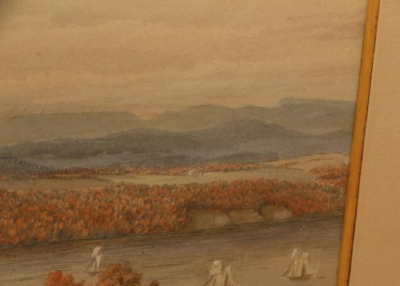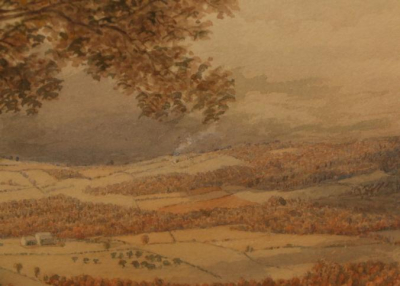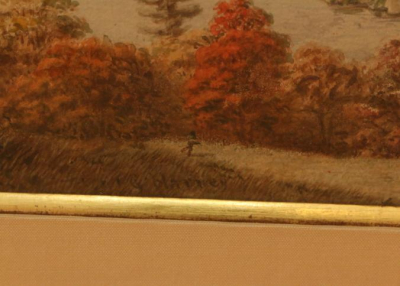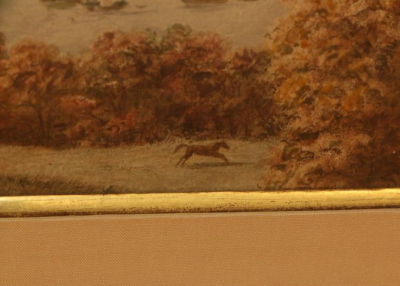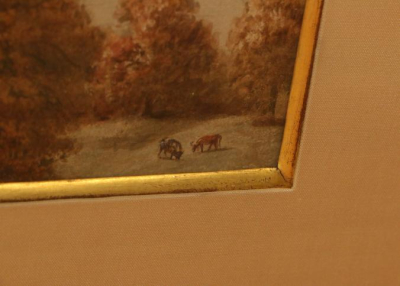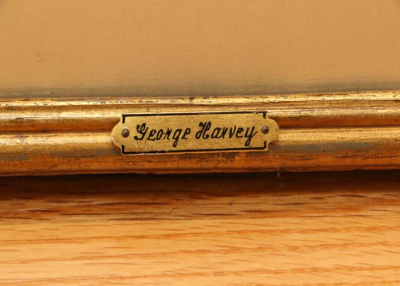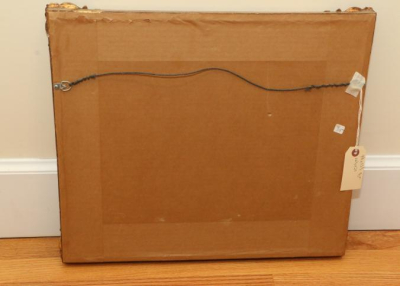Items located in Pleasant Valley, NY. Items include Hudson River School artwork, seascapes and framed lithographs. The Hudson River School of "Nature Painters" were painting from the mid-19ThC to the late 19thC. Although, they were actively painting views all across America, the scenes on the Hudson River are the most sought after. You have a rare opportunity to purchase these great "Views" now in this no-reserve auction. We also encourage you to come see us and preview the auction in-person.
Payment is due by Tuesday, May 23 at 3PM.
Pickup in Pleasant Valley, NY must be completed by Thursday, May 25 at 3PM.
All lots sold as is, where is. There is a 15% Buyers Premium for all lots purchased. Payment methods include cash, PayPal, MC, Visa, Discover or good check. You can make credit card payment online by going to your Member Area and selecting your invoice. To pay by PayPal, send money to info@aarauctions.com.
Payment is due by Tuesday, May 23 at 3PM.
Pickup in Pleasant Valley, NY must be completed by Thursday, May 25 at 3PM.
All lots sold as is, where is. There is a 15% Buyers Premium for all lots purchased. Payment methods include cash, PayPal, MC, Visa, Discover or good check. You can make credit card payment online by going to your Member Area and selecting your invoice. To pay by PayPal, send money to info@aarauctions.com.
Auction Info
Items located in Pleasant Valley, NY. Items include Hudson River School artwork, seascapes and framed lithographs. The Hudson River School of "Nature Painters" were painting from the mid-19ThC to the late 19thC. Although, they were actively painting views all across America, the scenes on the Hudson River are the most sought after. You have a rare opportunity to purchase these great "Views" now in this no-reserve auction. We also encourage you to come see us and preview the auction in-person.
Payment is due by Tuesday, May 23 at 3PM.
Pickup in Pleasant Valley, NY must be completed by Thursday, May 25 at 3PM.
All lots sold as is, where is. There is a 15% Buyers Premium for all lots purchased. Payment methods include cash, PayPal, MC, Visa, Discover or good check. You can make credit card payment online by going to your Member Area and selecting your invoice. To pay by PayPal, send money to info@aarauctions.com.
Payment is due by Tuesday, May 23 at 3PM.
Pickup in Pleasant Valley, NY must be completed by Thursday, May 25 at 3PM.
All lots sold as is, where is. There is a 15% Buyers Premium for all lots purchased. Payment methods include cash, PayPal, MC, Visa, Discover or good check. You can make credit card payment online by going to your Member Area and selecting your invoice. To pay by PayPal, send money to info@aarauctions.com.
Categories:
Framed George Harvey (1800-1878) 19thC watercolor signed G. Harvey with George Harvey plaque on ornate frame. Bio from AskArt: Born in Tottenham, England, George Harvey is considered by many critics to be the earliest flower-specialist painter in America. He was primarily a watercolorist, and did a number of large floral still life. He first visited the United States in 1820 and traveled in Ohio, Michigan and Canada before settling in New York City and then Boston. Many of the details of those travels are unknown.
In 1828, Harvey submitted two picturesque* English scene paintings and a floral still life to the National Academy of Design* for exhibition. He listed his address as Brooklyn and on the works described the English scenes as "made from a Sketch Taken in 1819;" and the still life as "A Vase of Flowers Copied from Nature." (Dearinger) He was almost immediately elected to the Academy for membership, which indicates that although he was a relative newcomer to New York City, he had already gained widespread respect as a painter.
By 1829, Harvey had moved to Boston, but he contributed to the National Academy exhibition of that year, but did not participate again until 1837, when he was living at Hastings-on-Hudson, New York and had a studio in the New York University Building. There he had built an Elizabethan-style cottage on the Hudson River near Tarrytown and close to his friend, Washington Irving. Harvey's home reflected his interest in Romantic revival architecture, and he also assisted Irving in remodeling his home "into a model Gothic Revival dwelling." (Dearinger)
When settled at Hastings-on-Hudson, he began his "American Scenery" series, for which he remains most known. Completed in 1840 and edited by Washington Irving, the project had forty watercolors that he intended to have engraved* in England and widely circulated by subscriptions. However, the cost was enormous, he could not get necessary funding; and only 250 copies with four views sold. (The New York Historical Society has about 20 of the unpublished watercolors intended for engraving in England. ) This project meant that Harvey spent much time away from the United States in England and diminished people's knowledge of him in America.
However, in England he became quite well familiar because he converted many of his watercolors to glass slides and gave lectures throughout the country between 1848 and 1850.
He did, however, stay in touch with associates in New York City, and entered National Academy exhibitions of 1840, 1842, 1846 and 1847. Over the next few years until his death in 1878, he traveled in both America and England, lecturing on his watercolor views. Between 1872 and 1875, he was in Bermuda, and did 26 watercolor views of that Island. By 1877, he was back in England, dying the next year. His remains are buried in Taunton 9.5" x 13.25" sight, 12.25" x 21"
More Details
Framed George Harvey (1800-1878) 19thC watercolor signed G. Harvey with George Harvey plaque on ornate frame. Bio from AskArt: Born in Tottenham, England, George Harvey is considered by many critics to be the earliest flower-specialist painter in America. He was primarily a watercolorist, and did a number of large floral still life. He first visited the United States in 1820 and traveled in Ohio, Michigan and Canada before settling in New York City and then Boston. Many of the details of those travels are unknown.
In 1828, Harvey submitted two picturesque* English scene paintings and a floral still life to the National Academy of Design* for exhibition. He listed his address as Brooklyn and on the works described the English scenes as "made from a Sketch Taken in 1819;" and the still life as "A Vase of Flowers Copied from Nature." (Dearinger) He was almost immediately elected to the Academy for membership, which indicates that although he was a relative newcomer to New York City, he had already gained widespread respect as a painter.
By 1829, Harvey had moved to Boston, but he contributed to the National Academy exhibition of that year, but did not participate again until 1837, when he was living at Hastings-on-Hudson, New York and had a studio in the New York University Building. There he had built an Elizabethan-style cottage on the Hudson River near Tarrytown and close to his friend, Washington Irving. Harvey's home reflected his interest in Romantic revival architecture, and he also assisted Irving in remodeling his home "into a model Gothic Revival dwelling." (Dearinger)
When settled at Hastings-on-Hudson, he began his "American Scenery" series, for which he remains most known. Completed in 1840 and edited by Washington Irving, the project had forty watercolors that he intended to have engraved* in England and widely circulated by subscriptions. However, the cost was enormous, he could not get necessary funding; and only 250 copies with four views sold. (The New York Historical Society has about 20 of the unpublished watercolors intended for engraving in England. ) This project meant that Harvey spent much time away from the United States in England and diminished people's knowledge of him in America.
However, in England he became quite well familiar because he converted many of his watercolors to glass slides and gave lectures throughout the country between 1848 and 1850.
He did, however, stay in touch with associates in New York City, and entered National Academy exhibitions of 1840, 1842, 1846 and 1847. Over the next few years until his death in 1878, he traveled in both America and England, lecturing on his watercolor views. Between 1872 and 1875, he was in Bermuda, and did 26 watercolor views of that Island. By 1877, he was back in England, dying the next year. His remains are buried in Taunton 9.5" x 13.25" sight, 12.25" x 21"
High Bid:
$2,100.00 – eartha
Auction Type: One Lot
Quantity: 1
Bidding has closed on this lot

